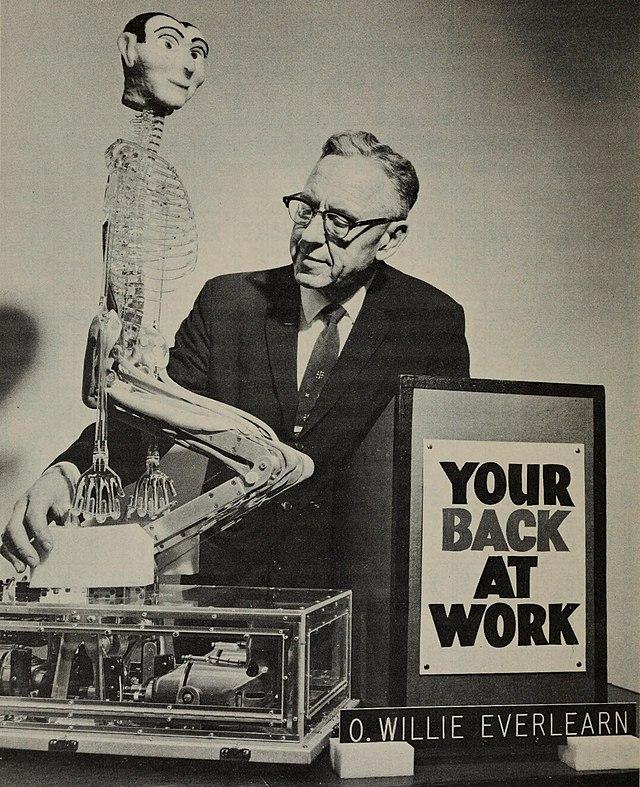Introduction: What is the Back and Why Does it Need Protection?
In recent years, the back has been a subject of much discussion in the medical world due to the increase in back pain. The purpose of this article is to explore different treatment and prevention options for back pain, and low back pain management.
Many people suffer from lower back pain, which can be an excruciating experience. It can also have a major impact on a person’s quality of life which is why it requires protection. The section will explore different treatment options for low back pain management such as medication, physical therapy, and surgery.
Common Causes of Back Pain in Industry
The back is an intricate and powerful system of bones, muscles, and nerves. Back pain usually occurs when something puts pressure or stress on the back and its supporting structures.
The two most common causes of back pain in industry are:
- Overuse: If you do repetitive tasks all day long without taking breaks, your back can get tired and start to hurt.
- Improper lifting: Lifting heavy objects incorrectly can put a lot of stress on your back.
Preventing Back Pain in Industry
Work-related back pain is a common issue that affects over 10 million people each year. To do their jobs, workers often have to stay in awkward positions for long periods of time, which can lead to back pain.
In order to prevent back pain, people should maintain good posture while at work. They should also get enough sleep and avoid sitting for too long at a time. People with pre-existing conditions such as arthritis or diabetes should talk to their healthcare provider about making adjustments in their work habits.
Preventing Back Injury
Most of the back injuries that occur in the workplace happen when people lift things the wrong way.
- Sometimes the object is too heavy for them, or it’s too bulky to carry safely, or they try to lift it while they’re in an awkward position.
- Most of the time employees hurt themselves by bending at the waist when they lift.
Bending at the waist multiplies the weight of your upper body, and anything that you pick up and carry, by a factor of ten!
- That 30-pound box of fasteners you’re carrying puts an additional 300 pounds of weight on your back.
- All that pressure is focused on the vertebrae in your lumbar spine.
To avoid these problems, remember to “think before you lift”.
- Don’t do any lifting if your back feels stiff or painful (you’ll just make things worse).
- Consider the load’s size, shape, and weight.
- If it’s too heavy for you to pick up easily, or it’s bulky or hard to grasp, get some help.
- Ask a coworker to give you a hand, or use a hand truck or dolly.
When you do decide to make a lift by yourself:
- Get close to the object.
- Lower yourself by bending at the knees.
- Keep your shoulders level and centered over your hips.
- Grasp the load securely.
- Keep your back straight.
- Lift slowly and steadily with your legs.
Leaning forward when you lift is as hazardous as bending at the waist.
- Slide objects toward you and get them as close as you can before you lift them.
You should keep your back straight while you’re carrying a load as well.
- If you need to turn, change direction by moving your feet.
- Do not twist at the waist.
When it’s time to put the load down:
- Keep your back straight
- Slowly bend your knees
- Use the muscles in your legs for control.
3 Simple & Effective Back Exercises for Better Posture
We all know that we should sit up straight and maintain good posture. But for some of us, it’s hard to maintain the right position when we’re on our phones or working at a desk. This is where back exercises come in handy.
The following are 10 helpful and effective back exercises for better posture:
1) Arch your back by pulling your stomach in and pushing out your chest while you’re sitting up straight on an office chair. Repeat 8 times.
2) Tilt your head to the left and then to the right while looking forward with your chin slightly down while you’re sitting up straight on an office chair. Repeat 8 times on both sides.
3) Extend one arm out in front of you horizontally, raise it up, bend it at the elbow
—
If you’re interested in more back safety training content, we offer free demonstrations of our training courses.










